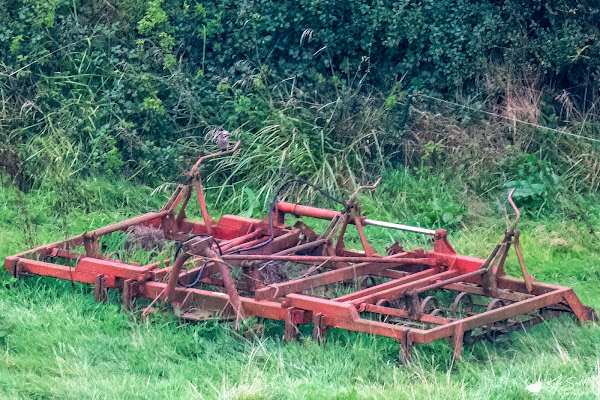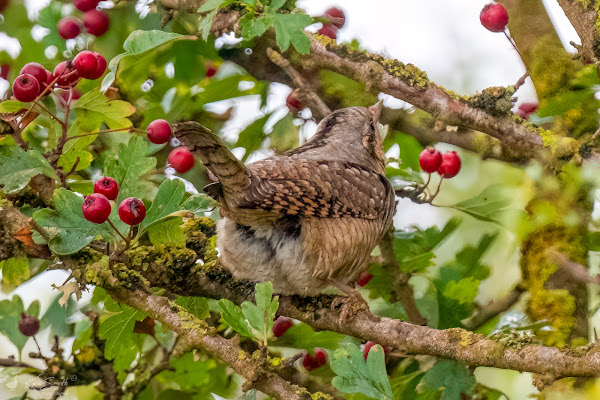We set out, this week as a three: me, Kev (@kev07713) and his wife Karen (@karenheath62). We were going to try for the woodchat shrike reported the previous day in Seatown, Devon and it was a good run down so we left early. An hour into the journey and we started encountering spots of rain on the windscreen - by the time we stopped for breakfast in Bridgewater the rain was hammering down. The forecast for Seatown suggested it would be raining there too, perhaps clearing from 9.00am. We'd take our time and wait for the weather to start to clear through - it was still raining when we departed but not as heavily.
We arrived and took an alternative path up to the location, mainly to avoid the very steep climb to the top of the hill. We arrived to find a couple of birders in position - they hadn't laid eyes on the bird and had been searching around the hedgerows for well over an hour. We joined the search but could only find mipits, goldfinch, bullfinch, blackcap, blackbird, woodpigeon, magpie, fly-through swallows, and a great-spotted woodpecker. There were numbers of jays perching on trees, bushes, hay bales and on some farm equipment - they could be seen with food and dropping to the ground presumably to stash it. At one point Kev saw something through his scope that caught his eye but, in the end, decided it was probably a stonechat - saw some later.
Hours passed but we couldn't get a sniff of our target bird. A wryneck was reported an hour along the coast and so reluctantly we made our was back to the car - we were the last remaining birders. It was late lunchtime and we'd be pushed for time when we got there, but we were hopeful that we might still get something out of the day.
We found a place to park on a lane that would cut down the distance to the bird's last location. On our walk across the fields to the cliffs we came across four wheatears and numbers of house martins. We then met another birder who confirmed the positions of all the reported sightings in the last 24 hours or so.
We set off checking as we went - you just never know. Eventually we got onto the coastal path and started up the slope, checking carefully. Time was running out. Kev was just ahead and called to say that he'd seen the bird come up off the ground and go low into a large bush. The wryneck is a small woodpecker just slightly larger than a sparrow and most likely to be seen on autumn passage in August and September. They feed almost exclusively on ants and, unlike most other woodpeckers, are seen mainly on the ground and do not often climb up vertical trunks or branches. It is a regular autumn migrant in small numbers, mainly to sites near southern coasts
We set up and waited for any movement. Another birder arrived and left before the bird started to show - we called him back - this was a lifer for him. The path had been busy and so we were lucky to have fallen fortunate in our timing.
It had been 10 minutes or so, but the bird had climbed through the bush to about seven feet up and came to the front. It worked round and back, popping back and forward into cover. It soon was out of view and then flew down the path and into another bush. It then flew again, even further back, and into another bush. We waited for 5 minutes but it had gone to ground again and we had to go as I would be at least 45 minutes late home to go out to friend's for the evening.
It had been a frustrating day for us but in the end, it had been salvaged by Kev spotting the wryneck as it made for cover. Another bird closer to his 300 year (so close now) and another tick for the year for Karen and I.





No comments:
Post a Comment